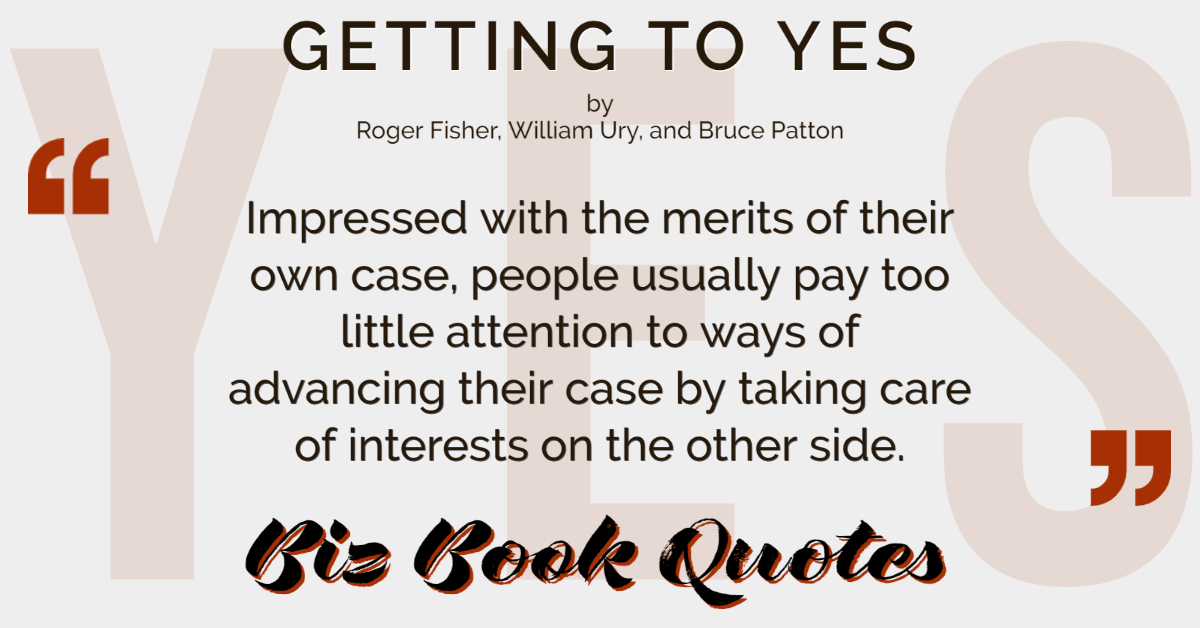|

|
Getting to Yes:
People generally assume that differences between two parties create the problem. Yet differences can also lead to a solution. Agreement is often based on disagreement.
|
75 |
|

|
Getting to Yes:
The kinds of differences that best lend themselves to dovetailing are differences in interests, in beliefs, in the value placed on time, in forecasts, and in aversion to risk.
|
75 |
|

|
Getting to Yes:
…dovetailing… Look for items that are of low cost to you and high benefit to them, and vice versa.
|
77 |
|

|
Getting to Yes:
However complex the other side’s decisional process may seem, you will understand it better if you pick one person… and see how the problem looks from his or her point of view.
|
78 |
|

|
Getting to Yes:
Impressed with the merits of their own case, people usually pay too little attention to ways of advancing their case by taking care of interests on the other side.
|
78 |
|

|
Getting to Yes:
To overcome the shortsightedness that results from looking too narrowly at one’s immediate self-interest, you will want to put yourself in their shoes.
|
78 |
|

|
Getting to Yes:
It is usually easier… to refrain from doing something not being done than to stop action already underway. And it is easier to cease doing something than to undertake an entirely new course of action.
|
79 |
|

|
Getting to Yes:
The other side is more likely to accept a solution if it seems the right thing to do – right in terms of being fair, legal, honorable, and so forth.
|
80 |
|

|
Getting to Yes:
We often try to influence others by threats and warnings of what will happen if they do not decide as we would like. Offers are usually more effective.
|
80 |
|

|
Getting to Yes:
No negotiation is likely to be efficient or amicable if you pit your will against [your opponent’s], and either you have to back down or they do.
|
83 |











